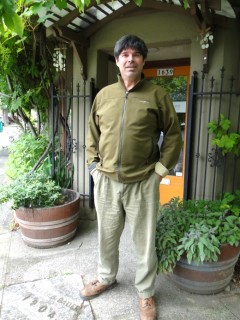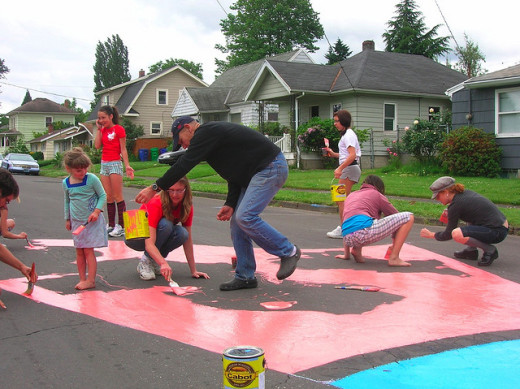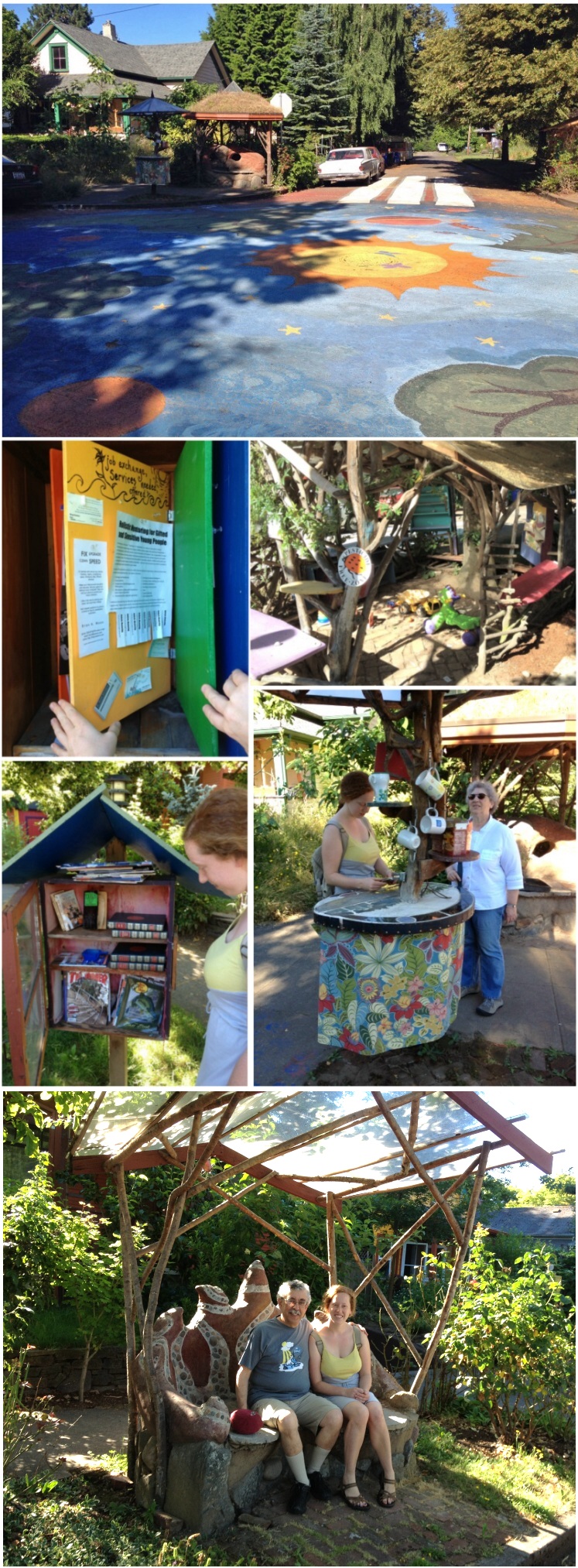Read the start of this article below; to view full article you need to be a PlannersWeb member. Already a member? — be sure you’re logged-in. Not a member? Consider joining the PlannersWeb.
Kind of a crazy question, you might well think. What do street intersections have to do with strong neighborhoods and empowered citizens? Aren’t intersections just for dividing up blocks, and getting traffic through?
Yes, you’re right — at least for now in most places. But in Portland, Oregon, thanks to dozens of volunteers working for a nonprofit called City Repair, and thousands of citizen participants, intersections have become the place to be. What’s more this intersection transformation, which I’ll soon explain, is spreading to other cities across North America.

I sat down at Riyaddh’s, a terrific Lebanese Restaurant in the city’s Hawthorne neighborhood, to talk with architect Mark Lakeman, who helped found City Repair back in 1996. Lakeman’s office was just steps away from Riyadh’s and a cluster of other restaurants and food carts.
Lakeman, who grew up in Portland, spent seven years traveling in Africa and other parts of the world. As he described it, the morphology of African villages, with houses clustered around a common community space, made for more cohesive communities — places where neighbors regularly interacted with each other.
In his travels and studies, Lakeman came to realize the importance of village squares, plazas, zocolos, whatever they may be called, in the midst of where everyone lives. Compared to the rest of the world, the U.S. had few such neighborhood gathering places.
Lakeman believes that part of the reason lies in America’s adoption of the grid street pattern, following the model of the Northwest Land Ordinance of 1785. The grid made the city into a commodity for sale piece by piece, while intersections cut off neighbors from easy contact with each other.
But, with a stroke of insight, Lakeman decided to turn intersections on their head, so to speak. The idea was simple: let nearby residents take control of their intersections.
Start by painting them —


then, if you like, furnish them with homemade benches, lending libraries, kids play areas, and even “T-stations.”

In other words, as Lakeman described, “make people realize that their streets and intersections don’t have to just be thoroughfares for traffic, they can be community gathering spaces.”
OK, that all sounds logical. But — really — what city would allow something like this, and what residents would even want to be involved?
Lakeman, however, was counting on two things: a knowledge of how Portland works, and an understanding of what people want.
So how did local activists convince city leaders to get on board with the idea?
You must be logged in or a PlannersWeb member to read the rest of the article.